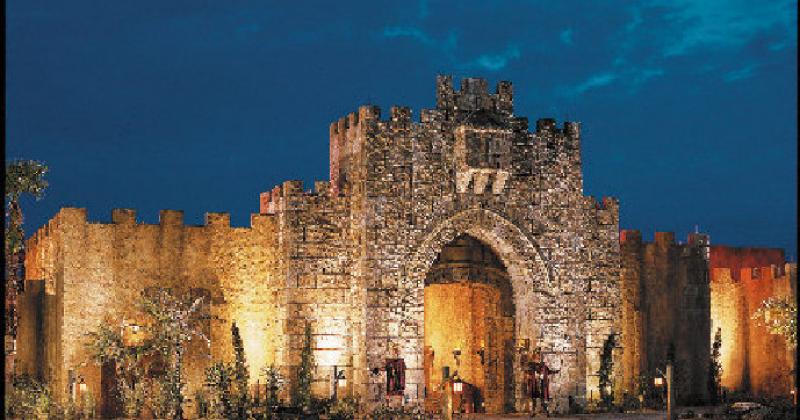The visit of Pope Francis to the Holy Land was a smashing success as he showed the world that religion can be a force for peace and reconciliation rather than a cause of division and conflict. The scheduled events went smoothly and his unscheduled actions caught the imagination of the world.
One highlight of the visit was the meeting of Pope Francis with Patriarch Bartholomew I in the Holy Sepulcher. Both men like and respect each other and in their friendship witnessed to the respect and cooperation that should mark ecumenical relations.
At the prayer service, both men prayed for progress toward unity and for better understanding among Christians. The site symbolized how much Catholics and Orthodox hold in common as disciples of the risen Lord. "Let us put aside the misgivings we have inherited from the past," the Pope said, "and open our hearts to the working of the Holy Spirit, the Spirit of love [see Romans 5:5] and of truth [see John 16:13], in order to hasten together towards that blessed day when our full communion will be restored."
Building bridges was also the theme of his meeting with Muslin leaders in Jordan, Palestine and Israel. He complimented King Abdallah II for his work promoting mutual understanding between Christians and Muslims. Nor did the pope pass up the opportunity to commend Jordan for welcoming refugees within its borders, and he called on the international community to help Jordan in caring for them.
The Pope met with Christian and Muslim refugees, listened to their stories, shared a meal with some of them, and told them that violence is not the path to peace and that they should not give up hope. He prayed "that reason and restraint will prevail and that, with the help of the international community, Syria will discover the path of peace." He also harshly condemned those who profit from selling arms to those in the conflict.
If you enjoy NCR, subscribe on your Kindle, smartphone or tablet. Learn more.
The pope also met with the Grand Mufti of Jerusalem at the Dome of the Rock, a holy site for Muslims. Here he referred to Abraham, whom Muslims, Jews, and Christians all see as "a father in faith and a great example to be imitated." He pleaded with all communities who look to Abraham: "May we respect and love one another as brothers and sisters! May we learn to understand the sufferings of others! May no one abuse the name of God through violence! May we work together for justice and peace!"
The papal visit was also a pastoral visit to the Christians of the Holy Land who have been besieged by both Muslim and Jewish extremists. He celebrated three Masses, first in Jordan, then in Bethlehem, and finally in the Cenacle, the place revered as the location of the Last Supper. As a shrinking minority in the Middle East, the Christians need all the encouragement and hope that the pope can bring.
Since the Cenacle is built on what is believed to be King David's tomb, the Mass there proved controversial with Orthodox Jews. Rumors that Israel was going to cede sovereignty over the site to the Vatican were used to fan opposition to the pope's visit. Both the Vatican and the Israeli government denied these rumors. The Vatican said that all it was asking for is regular access to the Cenacle for a couple of hours in the morning for worship services.
In a place where religion and politics are an explosive mix, it is a miracle that the pope's visit went so well. Even before he landed, Israelis were upset that he went to Palestine before going to Israel. The Vatican finessed this by noting that pope did not want to enter Israel on the Sabbath, a day of rest for Jews. Thus, he gave the Palestinians what they wanted without overly offending the Israelis.
The visit was filled with such symbolic gestures. The Pope flew from Bethlehem to Tel Aviv airport rather than directly to Jerusalem to make clear that the Vatican does not recognize Jerusalem as the capital of Israel. But the Israelis got a big win when the Vatican agreed to the Pope's laying a wreath at the tomb of Theodor Herzl, the founder of modern Zionism. The Israeli government insisted on this gesture, which the Palestinians did not like at all.
Pope Francis' words at the memorial of Yad Vashem were especially moving. They read like a Hebrew psalm and spoke of the "boundless tragedy of the Holocaust."
Hear, Lord, and have mercy!
We have sinned against you. You reign for ever.
Remember us in your mercy.
Grant us the grace to be ashamed of what we men have done,
to be ashamed of this massive idolatry,
of having despised and destroyed our own flesh
which you formed from the earth,
to which you gave life with your own breath of life.
Never again, Lord, never again!
On the other hand, no other world leader has been able to get Israeli and Palestinian leaders in the same room recently. In the Middle East, symbolic gestures and incremental steps are important. And who knows what conversations can occur behind closed doors in the Vatican.
Building bridges is not easy in the Middle East, but with patience and perseverance, the popes since the Second Vatican Council have reached out in dialogue to Muslims and Jews, Palestinians and Israelis, when many thought it was a hopeless task. Perhaps the papacy's bridges to these communities can provide a mutual path toward peace that goes through Rome. We can hope.
